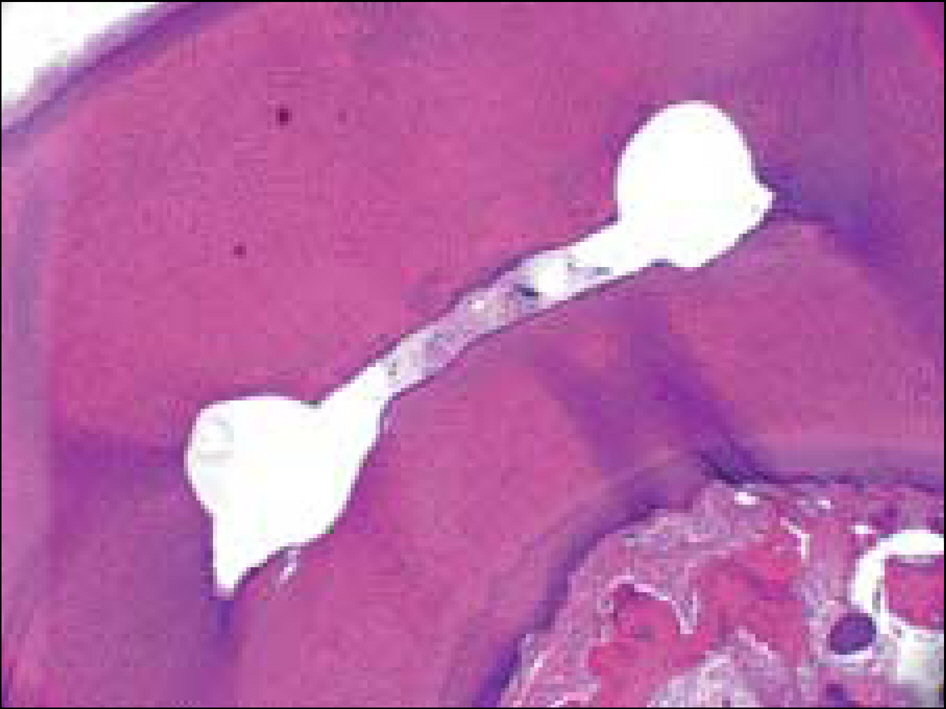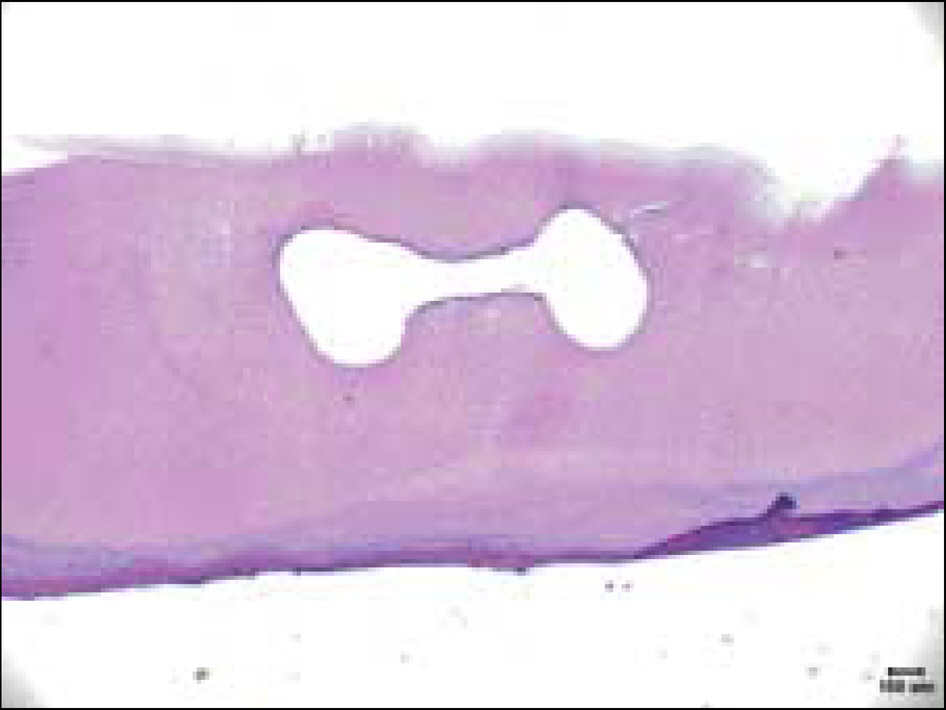Articles
- Page Path
- HOME > Restor Dent Endod > Volume 34(3); 2009 > Article
- Original Article IN VITRO EVALUATION OF CLEANING EFFICACY OF VARIOUS IRRIGATION METHODS IN MANDIBULAR MOLARS
- So-Young Lee, Won-Jun Son, WooCheol Lee, Kee-Yeon Kum, Kwang-Shik Bae, Seung-Ho Baek,*
-
J Korean Acad Conserv Dent 2009;34(3):-222.
DOI: https://doi.org/10.5395/JKACD.2009.34.3.215
Published online: January 14, 2009
Department of Conservative Dentistry, School of Dentistry, Seoul National University
- *Corresponding Author: Seung-Ho Baek, Dept of Conservative Dentistry, School of Dentistry, Seoul National University, 28 Yeongon-dong, Jongno-gu, Seoul, Korea, Tel: 82-2-2072-3820 Fax: 82-2-747-0958 E-mail: shbaek@snu.ac.kr
Copyright © 2009 The Korean Academy of Conservative Dentistry
This is an Open Access article distributed under the terms of the Creative Commons Attribution Non-Commercial License (http://creativecommons.org/licenses/by-nc/3.0) which permits unrestricted non-commercial use, distribution, and reproduction in any medium, provided the original work is properly cited.
- 738 Views
- 5 Download
- 2 Crossref
Abstract
-
The aim of this in vitro study was to evaluate the cleaning efficacy of various irrigation methods in the mandibular mesial roots. The forty five mesial root canals were shaped by Profile .06 instruments to apical size #30 and irrigated with 5 ml of 3.5% NaOCl. The teeth were divided into 3 groups and irrigated finally for 1 minute; Group 1: syringe irrigation, Group 2: ultrasonic irrigation, Group 3: RinsEndo irrigation.After histological processing, the cross sections of apical 1, 3, and 5 mm level were examined with an optical microscope. The cleanliness values of canals and isthmuses were calculated and analyzed by Mann-Whitney U test.
There were no significant differences in both canal and isthmus cleanliness between syringe irrigation and ultrasonic irrigation except 5 mm level of isthmus.
RinsEndo irrigation had significantly higher canal cleanliness values than syringe irrigation at 1 mm and 3 mm levels (p < 0.05). Also, RinsEndo irrigation had significantly higher isthmus cleanliness values than syringe irrigation at all levels evaluated (p < 0.05).
There were no statistical differences in both canal and isthmus cleanliness between ultrasonic irrigation and RinsEndo irrigation except 3 mm level of canal. From this study, RinsEndo irrigation can be useful as an additional irrigation procedure.

* Statistically significant (p < 0.05).

* Statistically significant (p < 0.05).



| Level | n | Group 1 (%) | n | Group 2 (%) | n | Group 3 (%) |
|---|---|---|---|---|---|---|
| 1 mm | 25 | 91.7±12.7 | 29 | 93.5±10.2 | 21 | 97.3±9.9 |
| 3 mm | 30 | 98.5± 3.0 | 30 | 98.4± 5.3 | 28 | 100.0±0.0 |
| 5 mm | 30 | 99.7± 1.0 | 28 | 99.1±14.6 | 30 | 99.8±0.7 |
| Level | n | Group 1 (%) | n | Group 2 (%) | n | Group 3 (%) |
|---|---|---|---|---|---|---|
| 1 mm | 8 | 46.3±35.6 | 10 | 59.0±30.5 | 8 | 82.5±26.4 |
| 3 mm | 11 | 56.6±30.5 | 11 | 69.3±32.0 | 13 | 87.6±19.5 |
| 5 mm | 10 | 51.0±33.2 | 15 | 85.4±29.6 | 13 | 88.1±21.5 |
- 1. Baugh D, Wallace J. The role of apical instrumentation in root canal treatment: A review of the literature. J Endod 31(5):333-340. 2005.ArticlePubMed
- 2. Grossman LI. Endodontic practice. 7th ed.. Philadelphia: Lea & Febiger; 1970.
- 3. Schilder H. Cleaning and shaping the root canal. Dent Clin North Am 18(2):269-290. 1974.ArticlePubMed
- 4. Wu MK, Wesselink PR. A primary observation on the preparation and obturation of oval canals. Int Endod J 34(2):137-141. 2001.ArticlePubMedPDF
- 5. Peters OA. Current challenges and concepts in the preparation of root canal systems: a review. J Endod 30(8):559-567. 2004.ArticlePubMed
- 6. Wu MK, van der Sluis LWM, Wesselink PR. The capability of two hand instrumentation techniques to remove the inner layer of dentin in oval canals. Int Endod J 36(3):218-224. 2003.PubMed
- 7. Meyer BE, Peters OA, Barbakow F. Effects of rotary instruments and ultrasonic irrigation on debris and smear layer score: a scanning electron microscopic study. Int Endod J 35(7):582-589. 2002.PubMed
- 8. Teixeira FB, Sano CL, Gomes BPFA, Zaia AA, Ferraz CCR, Souza Filho FJ. A preliminary in vitro study of the incidence and position of the root canal isthmus in maxillary and mandibular first molars. Int Endod J 36(4):276-280. 2003.ArticlePubMedPDF
- 9. Hwang HK, Bae SC, Cho YL. The irrigating effect before and after coronal flaring. J Kor Acad Cons Dent 28(1):72-79. 2003.Article
- 10. Cunningham WT, Martin H, Forrest WR. Evaluation of root canal debridement by the endosonic ultrasonic synergistic system. Oral Surg Oral Med Oral Pathol 53(5):401-404. 1982.PubMed
- 11. Walters MJ, Baumgatner JC, Marshall JG. Efficacy of irrigation with rotary instrumentation. J Endod 28(12):837-839. 2002.ArticlePubMed
- 12. Lee SJ, Wu MK, Wesselink PR. The efficacy of ultrasonic irrigation to remove artificially placed dentin debris from different sized simulated plastic root canals. Int Endod J 37(9):607-612. 2004.PubMed
- 13. Lee SJ, Wu MK, Wesselink PR. The ability of using syringe irrigation and ultrasound irrigation to remove dentin debris from simulated extensions and irregularities in root canals. J Kor Acad Cons Dent 28(3):289. 2003.
- 14. Cunningham WT, Martin H. A scanning electron microscope evaluation of root canal debridement with the endosonic ultrasonic synergistic system. Oral Surg Oral Med Oral Pathol 53(5):527-531. 1982.PubMed
- 15. Lumley PJ, Walmsley AD, Walton RE, Rippin JW. Cleaning oval canals using ultrasonic and sonic instrumentation. J Endod 19(9):453-457. 1993.PubMed
- 16. Lee SJ, Wu MK, Wesselink PR. The effectiveness of syringe irrigation and ultrasonics to remove debris from simulated irregularities within prepared root canal walls. Int Endod J 37(10):672-678. 2004.ArticlePubMed
- 17. Goodman A, Reader A, Beck M, Melfi R, Meyers W. An in vitro comparison of the efficacy of the step-back technique versus a step-back/ultrasonic technique in human mandibular molars. J Endod 11(6):249-256. 1985.ArticlePubMed
- 18. Haidet J, Reader A, Beck M, Meyers W. An in vivo comparison of the step-back technique versus a step-back/ultrasonic technique in human mandibular molars. J Endod 15(5):195-199. 1989.ArticlePubMed
- 19. Archer R, Reader A, Nist R, Beck M, Meyers W. An in vivo evaluation of the efficacy of ultrasound after step-back preparation in mandibular molars. J Endod 18(11):549-552. 1992.ArticlePubMed
- 20. Gutarts R, Nusstein J, Reader A, Beck M. In vivo debridement efficacy of ultrasonic irrigation following hand-rotary instrumentation in human mandibular molars. J Endod 31(3):166-170. 2005.ArticlePubMed
- 21. Schneider SW. A comparison of canal preparations in straight and curved root canals. Oral Surg Oral Med Oral Pathol 32(2):271-275. 1971.ArticlePubMed
- 22. Weller NR, Niemczyk SP, Kim S. Incidence and position of the canal isthmus. Part 1. Mesiobuccal root of maxillary first molar. J Endod 21(7):380-383. 1995.PubMed
- 23. Hwang HK, Shin YG. The effectiveness of obturating techniques in sealing isthmuses. J Kor Acad Cons Dent 26(6):499-506. 2001.
- 24. Hsu Y, Kim S. The resected root surface: the issue of canal isthmuses. Dent Clin North Am 41(3):529-540. 1997.PubMed
- 25. Nair PNR. Pathogenesis of apical periodontitis and the causes of endodontic failures. Crit Rev Oral Biol Med 15(6):348-381. 2004.PubMed
- 26. Mannocci F, Peru M, Sherriff M, Cook R, Pitt Ford TR. The isthmuses of the mesial root of mandibular molars: a micro-computered tomographic study. Int Endod J 38(8):558-563. 2005.PubMed
- 27. Ram Z. Effectiveness of root canal irrigation. Oral Surg Oral Med Oral Pathol 44(2):306-312. 1977.PubMed
- 28. Weller RN, Brady JM, Bernier WE. Efficacy of ultrasonic cleaning. J Endod 6(9):740-743. 1980.ArticlePubMed
- 29. Ahmad M, Pitt Ford TR, Crum LA. Ultrasonic debridement of root canals: acoustic streaming and its possible role. J Endod 13(10):490-499. 1987.ArticlePubMed
- 30. van der Sluis LWM, Versluis M, Wu MK, Wesselink PR. Passive ultrasonic irrigation of the root canal: a review of the literature. Int Endod J 40(6):415-426. 2007.ArticlePubMed
- 31. Moorer WR, Wesselink PR. Factors promoting the tissue dissolving capacity of sodium hypochlorite. Int Endod J 15(4):187-196. 1982.PubMed
- 32. Hulsmann M, Hahn W. Complications during root canal irrigation - literature review and case reports. Int Endod J 33(3):186-193. 2000.ArticlePubMed
- 33. Gernhardt CR, Eppendorf K, Kozlowski A, Brandt M. Toxicity of concentrated sodium hypochlorite used as endodontic irrigant. Int Endod J 37(4):272-280. 2004.PubMed
- 34. Hauser V, Braun A Frentzen. Penetration depth of a dye marker into dentine using a novel hydrodynamic system (RinsEndo). Int Endod J 40(8):644-652. 2007.ArticlePubMed
REFERENCES
Tables & Figures
REFERENCES
Citations

- Multivariate analysis of the cleaning efficacy of different final irrigation techniques in the canal and isthmus of mandibular posterior teeth
Yeon-Jee Yoo, WooCheol Lee, Hyeon-Cheol Kim, Won-Jun Shon, Seung-Ho Baek
Restorative Dentistry & Endodontics.2013; 38(3): 154. CrossRef - Review of root canal irrigant delivery techniques and devices
Yeon-Jee Yoo, Su-Jeong Shin, Seung-Ho Baek
Journal of Korean Academy of Conservative Dentistry.2011; 36(3): 180. CrossRef





Figure 1.
Figure 2.
Figure 3.
Figure 4.
Figure 5.
| Level | n | Group 1 (%) | n | Group 2 (%) | n | Group 3 (%) |
|---|---|---|---|---|---|---|
| 1 mm | 25 | 91.7±12.7 | 29 | 93.5±10.2 | 21 | 97.3±9.9 |
| 3 mm | 30 | 98.5± 3.0 | 30 | 98.4± 5.3 | 28 | 100.0±0.0 |
| 5 mm | 30 | 99.7± 1.0 | 28 | 99.1±14.6 | 30 | 99.8±0.7 |
| Level | n | Group 1 (%) | n | Group 2 (%) | n | Group 3 (%) |
|---|---|---|---|---|---|---|
| 1 mm | 8 | 46.3±35.6 | 10 | 59.0±30.5 | 8 | 82.5±26.4 |
| 3 mm | 11 | 56.6±30.5 | 11 | 69.3±32.0 | 13 | 87.6±19.5 |
| 5 mm | 10 | 51.0±33.2 | 15 | 85.4±29.6 | 13 | 88.1±21.5 |

 KACD
KACD
 ePub Link
ePub Link Cite
Cite

